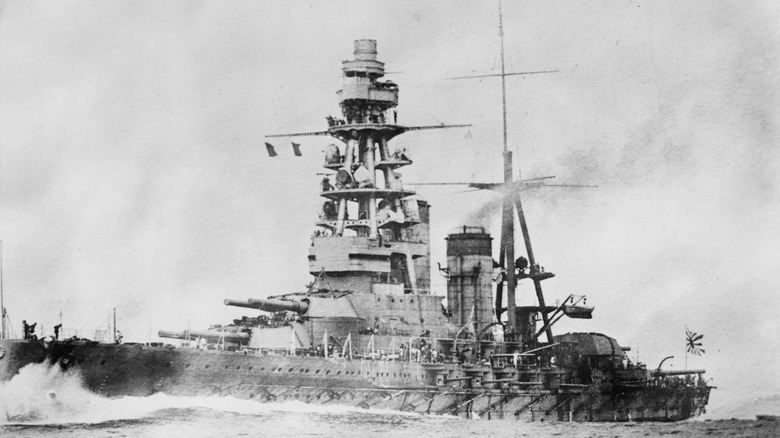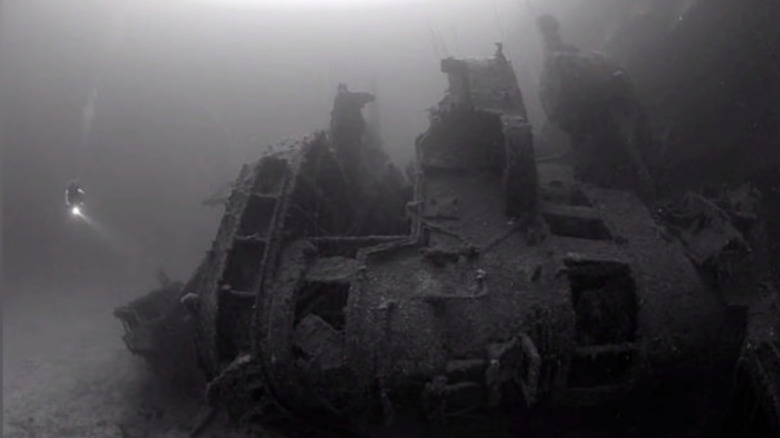The Truth About The Deadly Japanese Battleship Mutsu Disaster
In the early 1920s, the Imperial Japanese Navy began constructing Nagato-class battleships, which could compete with any army's finest during the interwar period (via The National Interest). The second ship constructed in this class was the Mutsu, which had eight 16-inch guns and armor that didn't sacrifice speed or agility. After consistent upgrades in the years leading up to World War II, the ship could stand against the more modern ships with ease.
While never seeing direct combat with the enemy, the Mutsu was involved in many operations throughout the Pacific theater of the Second World War — including training with the legendary battleship Yamato — and served honorably. Yet in June 1943, the Mutsu exploded at anchor, splitting in half and taking the lives of over 1,100 sailors and visitors on board, including the captain. The blast left only 300 survivors and a bundle of unsolved mysteries in its wake.
Human sabotage was the likely culprit
On June 8, 1943, the Mutsu docked near the Hashirajima Anchorage off the coast of Hiroshima and took on over 100 cadets for a familiarization tour, according to Combined Fleet. Just past noon, one of the magazines exploded, splitting the ship in half and sending both pieces to the bottom of the ocean. As rescue operations began, nearby ships and boats searched for enemy submarines, but couldn't find any. Of the 1474 people aboard the Mutsu, 353 survivors were rescued, including just 13 of the cadets. The Imperial Navy continues to maintain secrecy and doesn't even tell salvage divers which ship has sunk and how.
After an enemy attack is ruled out, it was first suspected that one of the shells combusted and sparked the explosion. But the smoke color and other details from the survivors conflict with this theory, and a report states that the most likely cause was human interference. Some survivors point to a disgruntled sailor accused of petty theft and expected to face naval court that day. In particular, he could have started a fire to serve as a distraction while he escaped. If that was the case, the plan failed on multiple accounts, as his body was later recovered and identified. A huge cover-up followed, and survivors were purposely split up and sent across the world to avoid the spread of rumors and leaked information. Some still suspect a submarine attack or deliberate sabotage from British spies. Ultimately, the cause of the Mutsu disaster will likely remain a mystery.

